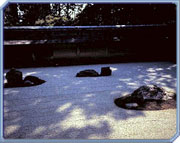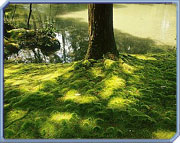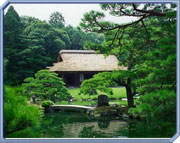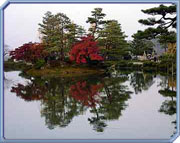 |
 |
 |
Japanese Garden Holidays
The gardens of Japan have long enjoyed a reputation as some of the most beautiful and original in the world and the principles and elements of design have been copied many times over. Cultivated spaces can be found everywhere and even the smallest space can be turned into something beautiful. The most famous gardens however, lie in the grounds of temples and shrines or have been specifically created to be enjoyed.
An ideal garden lover’s itinerary would include a range of destinations and combine traditional strolling and tea gardens with the more unusual Zen gardens. In Tokyo, arguably the most beautiful gardens are those of Hamarikyu Teien; surrounded by soaring skyscrapers and on the edge of the bustling Ginza district they remain a haven of peace and tranquillity in the heart of the metropolis. More well-known but beautiful nonetheless are the east gardens of the Imperial Palace with their magnificent Gingko trees, carp filled ponds and carpets of Irises.





The seasons play a major role when garden designing in Japan and the best gardens will have a particular feature in all seasons; cherry blossoms in the spring; irises in the summer; fiery red maple trees in the autumn and stunning snowscapes in the winter. The best gardens to see seasonal change are the strolling gardens of Kenrokuen in Kanazawa and Korakuen in Okayama.
Places of worship are also great places to find gardens and the best can be found in Kyoto, Nara and Kamakura. The gardens of Hase Dera in Kamakura, Kinkaku-ji in Kyoto and Kasuga jinja which has a canopy of wisteria in Nara, are all worth taking the time to hunt-out and explore.
Japan also has some fantastic examples of slightly unusual gardens which give away much about Japanese aesthetic principles. The esoteric dry-stone gardens found at Zen temples have been the source of contemplation and meditation for hundreds of year. The most puzzling example can be found at Ryoanji temple in Kyoto. The garden features 15 rocks (not all of which are visible at any one time) and a large patch of raked sand. The overall meaning is not clear but anyone who can see all 15 rocks all together is said to be on the cusp of reaching enlightenment. Less profound but equally as beautiful are the zen-gardens at Daitoku-ji; smaller in area and created to look like miniature landscapes, the standing stones represent mountains and small shrubs stand in for forests.





The moss gardens associated with the Imperial Villa (Koryuji) are also worth visiting. Viewing is by appointment only (we can arrange this) but for the individuality and strange character of the gardens it’s worth going to the extra effort. Bathed in an eerie green light, the gardens are created solely from a large number of different types of moss which are painstakingly maintained by teams of moss-pickers.
Japan is of course perhaps most famous for its cultivation of Bonsai and if this is your passion we can help organise visits to some of the finest nurseries in the country and also meetings with master growers, who have honed their skills over the course of a life time.
As one of the World’s best destinations for garden enthusiasts we will be delighted to help you plan your trip. Please contact us to start preparing your perfect trip.
BACK TO TOP
|
|
